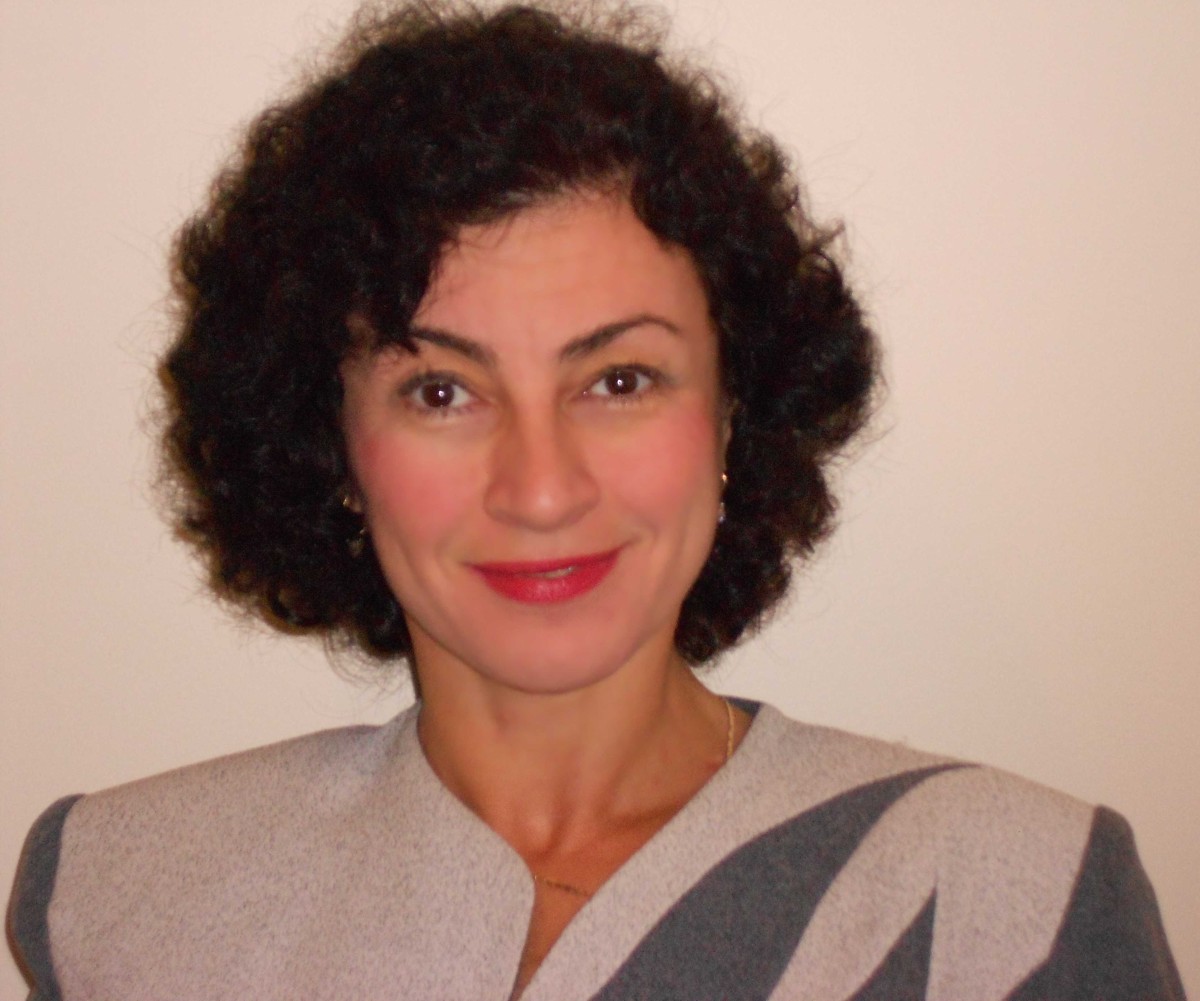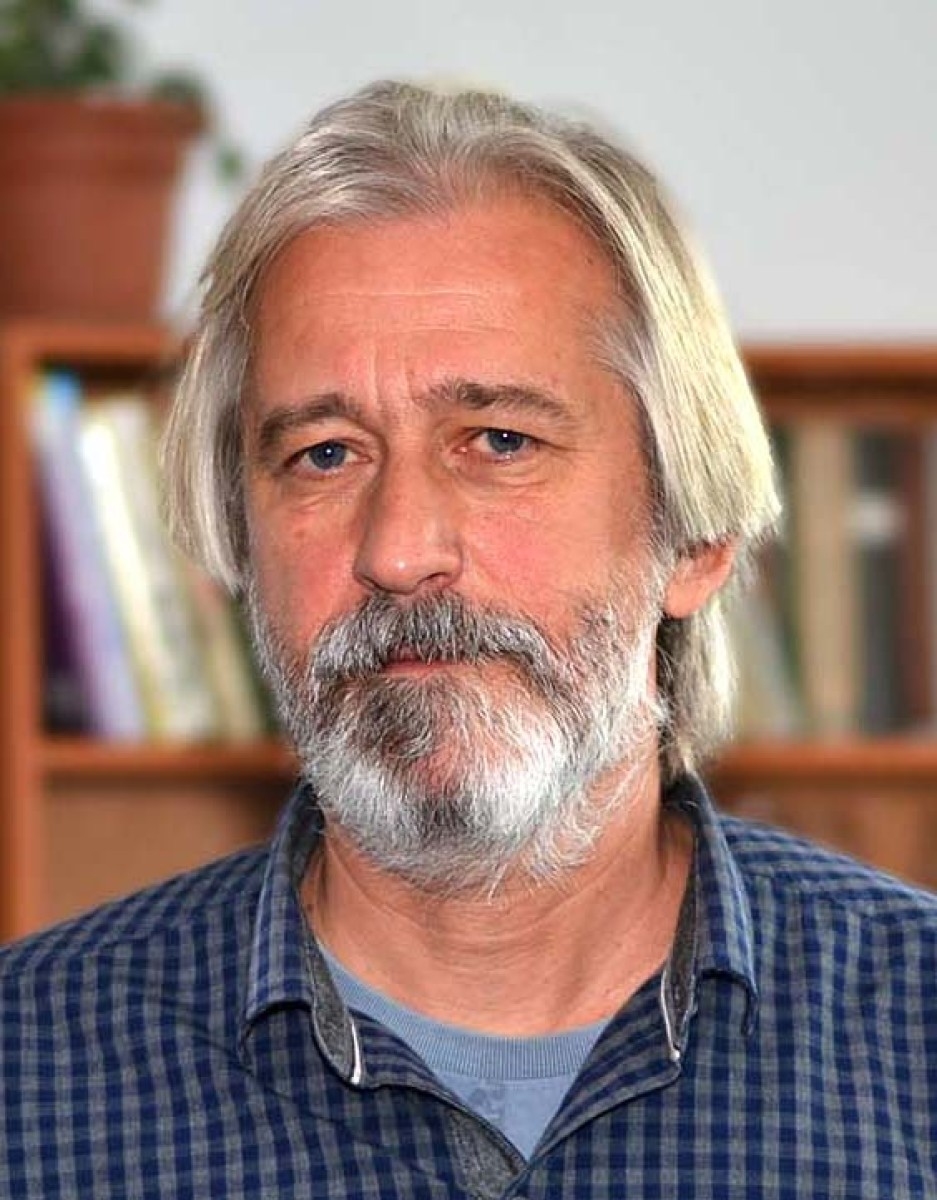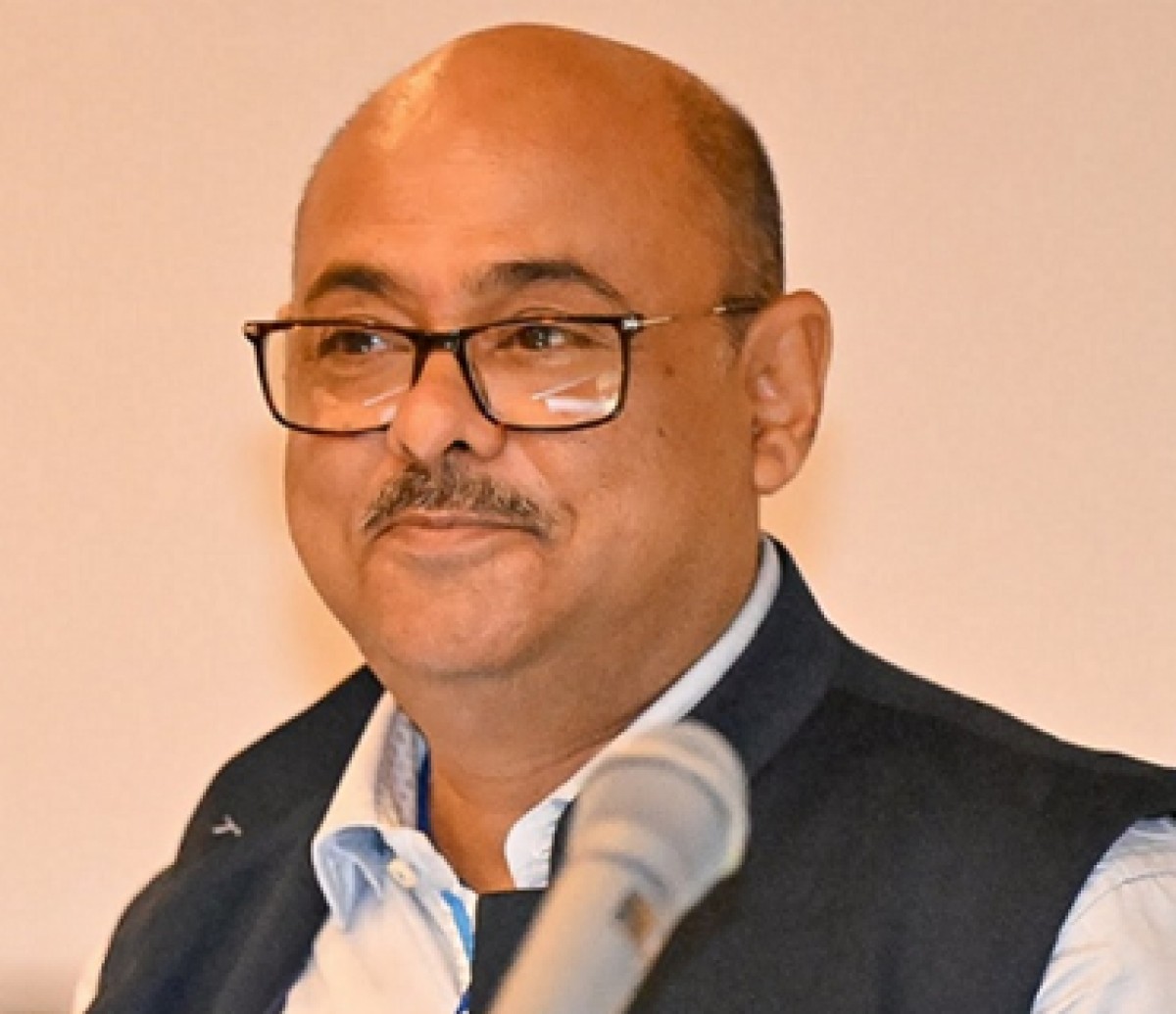KEYNOTE SPEAKERS AT ICCCC 2024
1. Prof. Barnabas BEDE, Department Chair, Mathematics, DigiPen Institute of Technology, Redmond, Washington, USA, bbede@digipen.edu;2. Prof. Alfred BRUCKSTEIN, Ollendorff Chair in Science, Technion, IIT, Haifa, Israel, freddy@cs.technion.ac.il
Tržaška cesta 25, Si-1000 Ljubljana, Slovenia, E-mail: vitomir.struc@fe.uni-lj.si
INVITED SPEAKERS AT ICCCC 2024
1. Prof. Răzvan ANDONIE, Central Washington University, 400 East University Way, Ellensburg, WA 98926, USA, Phone: (509) 963-1430, FAX: (509) 963-1449, andonie@cwu.edu
2. Prof. Diana INKPEN, University of Ottawa, School of Electrical Engineering and Computer Science, 800 King Edward, Ottawa, ON, Canada, K1N 6N5, http://www.site.uottawa.ca/~diana, diana.inkpen@uottawa.ca, tel: 613-562-5800 ext. 6711
3. Prof. Karol Mikula, PhD., DrSc. (Department of Mathematics and Descriptive Geometry, Faculty of Civil Enineering, Slovak University of Technology, Bratislava, Slovakia), karol.mikula@gmail.com
4. Dr. Rajeeb Dey, Department of Electrical Engineering, at National Institute of Technology Silchar, India,
rajeeb.iitkgp@gmail.com
Dr. Barnabas BEDE

Barnabas Bede, Department Chair, Mathematics, DigiPen Institute of Technology, Redmond, Washington, USA, bbede@digipen.edu
Dr. Barnabas Bede earned his Ph.D. in Mathematics from Babes-Bolyai University of Cluj-Napoca, Romania. His research interests include Machine Learning, Fuzzy Sets and Fuzzy Logic, and Modeling under Uncertainty.
He is a Professor of Mathematics at DigiPen Institute of Technology in Redmond, WA, USA, and he serves as Department Chair of Mathematics, and Program Director of the Bachelor of Science in Computer Science in Machine Learning. Before that, he held positions at the University of Rio Grande Valley, Texas, the University of Texas at El Paso, the University of Oradea Romania, and Óbuda University in Hungary.
He has published more than 100 research publications, including three research monographs. His work has received more than 6000 citations according to google scholar. Current research interests include Explainable AI, investigating connections between Deep Neural Networks and Fuzzy Systems. He serves as the President of the North American Fuzzy Information Processing Society (NAFIPS) and as conference chair for the upcoming NAFIPS 2024 International Conference on Fuzzy Systems, Soft Computing, and Explainable AI, to be help in South Padre Island, May 27-29, 2024.
Title: Explainable Machine Learning based on Fuzzy Systems
Abstract. In this talk, we will explore the construction of novel fuzzy-based explainable machine learning algorithms. Fuzzy systems are widely used in modeling uncertainty and are based on fuzzy rules describing connections between various variables in this setting. We will start by studying the equivalence between a layer of a Neural Network with ReLU activation and a Takagi-Sugeno (TS) fuzzy system with triangular membership function. We prove an equivalence relation between the above mentioned systems under relaxed conditions. As the proofs are constructive, this method allows us to transform between the considered Neural Networks and TS fuzzy systems. Next we will discuss inter-approximation between TS and Mamdani fuzzy systems. While the TS fuzzy systems are computationally more efficient, Mamdani systems are superior in their interpretability. We will discuss applications of the interpretable Machine Learning algorithms introduced here to physics engines used in video games. Next we will explore the equivalence between neural networks with multiple layers and multiple inputs with ReLU activation, and Takagi-Sugeno systems with similar multi-layer structure. This method allows us to translate a Neural Network into a Fuzzy Systems, potentially extracting fuzzy rules that can make neural networks more interpretable. Future research directions are also explored.
Dr. Alfred M. BRUCKSTEIN

Alfred M. Bruckstein, Ollendorff Chair in Science, Technion, IIT, Haifa, Israel, freddy@cs.technion.ac.il
Alfred M. Bruckstein holds the Ollendorff Chair in Science at the Technion, IIT, in the Deppartment of Computer Science. A graduate of the Technion, with a BSc and an MSc in EE, he earned a PhD at Stanford University, in the EE Department, in 1984. Since then he is on faculty at the Technion, with long-term visiting professorship positions at Bell Laboratories at Murray Hill, NJ, USA (from 1987 to 2000), and at Nanayang Technological University, in Singapore (from 2009-present). His shorter visiting positions include Tsing-Hua University in Beijing, China (2002-2003), and visiting positions at Universite d'Evry, Paris France, at CEREMADE, University Dauphine, Paris, france, and Karlsruhe University in Germany. At the Technion, Professor Bruckstein served as the elected Dean of the Graduate School, from 2002 to 2005, and as the Head of the Technion Excellence Program for Undergraduates, from 2006 to 2012. He is a member of the MAA and AMS, and in 2014 he was elected Fellow of SIAM for contributions to Signal Processing, Image Analysis and Ant Robotic.
Title: Swarming from Myopic Interactions
Abstract: We discuss myopic-sensing-based interactions in swarms of simple mobile agents that lead to desired global behaviors in performing multi-agent robotic tasks. The inspiration comes from amazing feats observed in ant colonies, schools of fish and starling flocks. The mathematical tools for analyzing such problems interestingly combine graph theory with continuous dynamic systems and various types of optimization processes.
Dr. Vitomir ŠTRUC

Vitomir Štruc, University of Ljubljana Tržaška cesta 25, Si-1000 Ljubljana, Slovenia, vitomir.struc@fe.uni-lj.si
Vitomir Štruc is a Full Professor at the University of Ljubljana, Slovenia. His research interests include problems related to biometrics, computer vision, image processing, and machine learning. He (co-)authored more than 150 research papers for leading international peer reviewed journals and conferences in these and related areas. Vitomir is a Senior Area Editor for the IEEE Transactions on Information Forensics and Security, a Subject Editor for Elsevier’s Signal Processing and an Associate Editor for Pattern Recognition, and IET Biometrics. He serves regularly on the organizing committees of visible international conferences, including IJCB, FG, WACV and CVPR. He currently acts as a Program Chair for IEEE Face and Gesture 2024, WIFS 2024 and WACV 2025 and a Tutorial Chair for CVPR 2024. Dr. Struc is a Senior member of the IEEE, a member of IAPR, EURASIP, Slovenia’s ambassador for the European Association for Biometrics (EAB) and the former president and current executive committee member of the Slovenian Pattern Recognition Society, the Slovenian member of IAPR. Vitomir is also the current VP Technical Activities for the IEEE Biometrics Council, the secretary of the IAPR Technical Committee on Biometrics (TC4) and a member of the Supervisory Board of the EAB.
Title: Generative models in computer vision for fashion and beauty
Abstract: With the developments in the field of generative modeling and with the appearance of powerful model architectures, such as Generative Adversarial Networks (GAN) and diffusion models, a wide range of new techniques and inventive algorithms has emerged recently to solve diverse computer vision problems, including many problems that are of interest for the fashion and beauty industry. In this talk, I will first provide a short overview of recent advances in generative modeling and describe some of our research efforts that focus explicitly on generative models. Next, I will present examples of our recent work utilizing generative models and talk about: (i) face image editing with our GAN inversion based MaskFaceGAN technique that allows for photo realistic image manipulation and explicitly addresses the problem of attribute entanglement seen with many latent-space based editing solutions, (ii) virtual try-on with our context-driven C-VTON model and GlassesGAN approach, and (ii) text-guided design of clothing in a virtual try-on setting with diffusion models in our DiCTI model. Finally, I will elaborate on some of the existing challenges with generative models and highlight future research directions.
Dr. Razvan ANDONIE

Razvan ANDONIE received the M.S. degree in mathematics and computer science from University of Cluj-Napoca, Romania, and the Ph.D. degree from University of Bucharest, Romania. His Ph.D. advisor was Solomon Marcus, Fellow of the Romanian Academy. He is currently a Professor of Computer Science at both Central Washington University and Transilvania University of Brasov, Romania. He has published more than 130 research papers and was an invited professor at many universities. His actual research interests are computational intelligence techniques and applications, parallel/distributed computing, machine learning, and big data analytics.
Abstract: Transfer Entropy (TE), introduced by Thomas Schreiber in 2000, is a non-parametric unilateral information measure between two random processes X and Y. TE from X to Y is the amount of uncertainty reduced in future values of Y by knowing the past values of X given past values of Y. TE was commonly used to quantify the degree of coherence between events, usually those represented as time series. TE was sometimes related to Granger’s causality, where process X is said to Granger-cause process Y if the future realizations of Y can be better explained using the past information from X and Y rather than Y alone. Approximating TE from a dataset is computational challenging. Several standard nonparametric entropy estimation methods have been used (e.g., kernel density estimation, nearest-neighbor, Parzen).
Current neural networks architectures are hard to train because of their increasing complexity and the size of the used datasets. Our general objective is to design more efficient training algorithms utilizing, if possible, causal relationships inferred from neural networks. Recently, there is a growing interest in applying TE in quantifying the effective connectivity between artificial neurons, including in deep architectures, such as Convolutional Neural Networks and Graph Convolutional Networks.
Dr. Diana INKPEN

Diana Inkpen, University of Ottawa, School of Electrical Engineering and Computer Science, 800 King Edward, Ottawa, ON, Canada, K1N 6N5, http://www.site.uottawa.ca/~diana, diana.inkpen@uottawa.ca, tel: 613-562-5800 ext. 6711
Diana INKPEN is a Professor at the University of Ottawa, in the School of Electrical Engineering and Computer Science. She obtained her Ph.D. from the University of Toronto, Department of Computer Science. She has a M.Sc. and B.Eng. degree in Computer Science and Engineering from the Technical University of Cluj-Napoca, Romania. Her research is in applications of Natural Language Processing and Text Mining. She organized seven international workshops and she was a program co-chair for the 25th Canadian Conference on Artificial Intelligence (AI 2012, Toronto, ON, May 2012) conference. She is the editor-in-chief of the Computational Intelligence journal and an associate editor for the Natural Language Engineering journal. She was an invited speaker for the Applied Natural Language Processing track at the 29th Florida Artificial Intelligence Research Society Conference (FLAIRS 2016, Key Largo, FL, May 2016), for the 28th Canadian Conference on Artificial Intelligence (AI 2015, Halifax, NS, June 2015), and International Symposium on Information Management and Big Data (SimBig 2015, Cuzco, Peru, September 2015). She published a book on Natural Language Processing for Social Media (Morgan and Claypool Publishers, Synthesis Lectures on Human Language Technologies, the third edition appeared in 2020), 10 book chapters, more than 35 journal articles and more than 120 conference papers. She received many research grants, from which the majority include intensive industrial collaborations.
Title: Explainable Depression Detection Using Large Language Models on Social Media Data
Due to the rapid growth of user interaction on different social media platforms, publicly available social media data has increased substantially. The sheer amount of data and level of personal information being shared on such platforms has made analyzing textual information to predict mental disorders such as depression a reliable preliminary step when it comes to psychometrics.
In this talk, I will describe methods and experiments for detecting signs of depression from social media, at post level, user level, and population level. I will focus on methods for automatically filling the Beck's Depression Inventory (BDI) questionnaire. We experimented with many methods, including prompt-based learning with Large Language Models (LLMs). We propose a system based on LLMs that can generate both predictions (with state-of-the-art performance) and explanations. Our system is explainable on two levels: first, knowing the answers to the BDI questions provides clues about the possible symptoms that could lead to a clinical diagnosis of depression; second, our system can explain the predicted answer for each question.
Dr. Karol Mikula

Karol Mikula is a full professor of Applied mathematics at the Slovak University of Technology in Bratislava (STUBA). He made fundamental contributions to mathematical and computational modelling methods in various branches of applied science and technology, such as digital image processing and analysis in biology, medicine and remote sensing, computational fluid dynamics and physical geodesy. He published more than 200 original research papers on these topics and has received numerous invitations to foreign universities‘ scientific seminars and plenary and minisymposia lectures at international conferences worldwide. Karol Mikula was a principal investigator of 2 NATO grants, 4 European Union research projects and 3 projects of the European Space Agency (ESA), resulting in the world first digital reconstruction of the early vertebrate embryogenesis in space and time from 3D+time confocal microscopy videos, determination of the new world constant W0, a conventional value for the geoid reference potential determining the physical shape of the Earth for our epoch, and creation of the environmental software NaturaSat devoted to Natura 2000 protected sites automatic identification and monitoring from satellite images. He was the President of the Slovak Mathematical Society and was awarded the independent journalists’ prize “The Scientist of the Year of the Slovak Republic” for his work on European Union projects, and the “Prize of Minister of Education, Science, Research and Sport of the Slovak Republic” for his exceptional scientific achievements. He founded and is responsible for the study program Mathematical and Computational Modelling at STUBA.
Title of the talk: From Cell to Space – Mathematical and computational methods for Earth and human health
Abstract of the talk: In this talk we present image processing tools for (i) the reconstruction of early Zebrafish embryogenesis and the extraction of the cell lineage tree from confocal microscopy videos, (ii) the immune system cells tracking and shape recognition in inflammation episodes during the wound healing by macrophages and (iii) the automatic classification of Natura 2000 protected habitats from Sentinel-2 satellite optical imagery. The presented methods will include the nonlinear diffusion filtering of images and videos, the Eulerian and Lagrangian curve and surface evolution models for image segmentation, the segmentation-based cell tracking methods, and forward-backward graph diffusion algorithm, called Natural Numerical Network (NatNet), for supervised deep learning data classification. All the methods will be applied to real data from developmental biology, immunology and ecology.
Dr. Rajeeb Dey

rajeeb.iitkgp@gmail.com
Dr. Rajeeb Dey is Associate Professor in the Department of Electrical Engineering, at National Institute of Technology Silchar, India. He has worked as a post-doctorate fellow in the Department of Automatic control, CINVESTAV-IPN at Mexico City during 2015-2016.
Dr. Dey obtained his PhD in Control System Engineering from the Department of Electrical Engineering, Jadavpur University, India in 2012. He is a recipient of post-doc fellowship from, The world Academy of Science (TWAS), Italy in 2015, National Associateship of Department of Bio-Technology in 2013, ERASMUS+ fellowship of European Union for teaching to the UAV Arad, Romania during 2018-2023. In 2020 August he has been appointed as a visiting professor by UAV, Arad, Romania.
Dr. Dey is SMIEEE’2013, FIE(I)’2021. Currently he is the Honorary Secretary of The Institution of Engineers (India) Silchar Centre, IFAC (Technical Committee) TC 3.2 Member. In the past he has served as a General Secretary, ACDOS (Advanced Control and Dynamic Optimization Society), Executive member of ACDOS, Executive Member of IEEE Joint CMS Kolkata Chapter, Executive Member (Electrical) of IE(I) Silchar Centre.
Dr Dey’s current research includes Time-delay control, Control applications in Biomedical and Electrical Power System, Cyber Physical Systems, Socio-Psychological System modelling. He has guided several PhD and Master thesis, executed Government sponsored projects. Dr. Dey has published 06 books and research monographs, 60 journal and conference articles and, 01 Indian patent is granted in his name.
Title of the talk: Modelling and Stability of Dyadic Interpersonal Relationship: Indian Urban Societal Perspective
Abstract of the talk: In India it is a general perception until recently that divorce and separation among married couples in both rural and urban setting are rare events. In last few decades there were media reports making headlines like - “The great Indian wedding is succumbing to the great Indian divorce”, “Divorce rates climbing up in Bangalore”, “In tradition bound India, female, divorced and happy”, “Not so happily ever after as Indian divorce rate doubles”. It is reported that, by 2025 in the US every two out of three marriages will end in divorce and in the average divorce rate is 44%. The divorce and separation are the major social problem being faced by the two largest democracies of the world in the current times.
The interpersonal relationship among married couple is a complex socio-psychological dynamical process owing to the dynamics arising out of the social factors, couples’ own psychological factors, interactive psychological factors and, inter-dependency of social and psychological factors. The prediction of interpersonal relationship and their consequence like, “happy and stable marriages”, “marriage dissolution (or divorces)” and, “chaotic relationship” have been attempted in India, South east Asia, US and Europe by social and psychological scientists through the well-known traditional statistical methods But investigation on this topic through the mathematical modelling and system theoretic approach is very limited.
This talk will explore the mathematical modelling of interpersonal relation for Indian urban couples that is different from the existing models proposed in the west and finally stability assessment method of the relationship will be discussed for the proposed model.